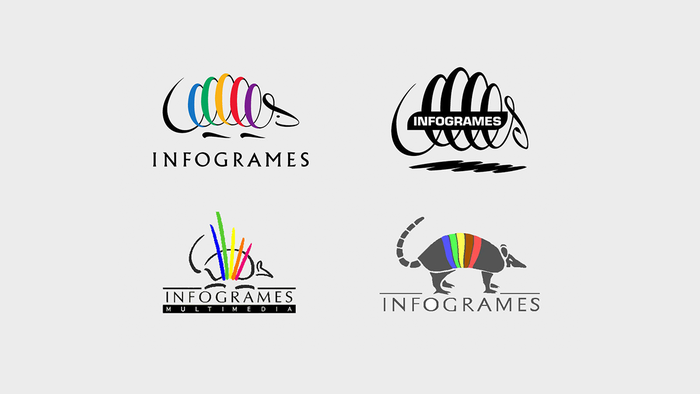GameStop is known for its big used game sales, but the retailer's non-core businesses are growing. Gamasutra's Matt Matthews examines how the company is poised for growth, even as the market shifts to digital.

The last time I wrote about GameStop, we had just heard the first details about Microsoft's plans for the Xbox One and it looked like the used game business would be under assault. Since then Microsoft has reversed course, to an extent, and GameStop's business model will survive largely intact for at least the beginning of this generation. As Michael Hogan, an executive vice president with the company said in last week's investor conference call, “there was some concern that console manufacturers might attempt to limit consumers' ability to share, trade or resell games” and that their customers were telling them that such a system “would seriously limit purchase interest in the new consoles.” Once Sony announced that its PlayStation 4 disc restrictions would be the same as the PlayStation 3 disc restrictions, and Microsoft essentially followed suit, the situation has “clearly resolved in favor of the consumer” or, put another way, in favor of GameStop's relationship with its consumers. However, as I have stressed before, GameStop is not sitting idly by while the market shifts further and further to digital distribution. All that is necessary for digital to succeed is for consumers to buy nothing from a physical store. It requires no further action by publishers or console manufacturers.
Big change coming
GameStop is not sitting idly by waiting for the end. They know that big change is coming. “By 2015, console digital will be nearing $4 billion”, said GameStop's Hogan last week, but added their own special twist: “much of [that console digital product] will be sold in stores.” So, how is GameStop's transition to digital going? Let's look at the numbers. Below I've graphed estimates of GameStop's total digital annualized revenues. That is, each point represents the total digital revenue for the four quarters ending with the date below that point. So adjacent data points include a three-quarter overlap in data – and in this way, we can see how the annualized revenue changes on a quarterly basis.  Since GameStop began its transition to digital back in 2010, the company has grown its total annualized digital revenue rate from $289 million per year to $710 million per year, or a compound annualized growth rate (CAGR) of 43 percent over the last 2.5 years. That is impressive -- but the company used to have a goal of hitting $1.5 billion digital revenue per year by January 2015, and that goal would have required a CAGR of 50 percent for four years. If it maintains the current 43 percent rate, it will reach $1.2 billion per year by January 2015, far short of its goal – but still impressive. However, its growth rate has slowed in the past few quarters, so even that more modest target may be harder to hit. I don't think it's any mistake that GameStop hasn't mentioned the $1.5 billion per year target in over a year now, but that doesn't mean they aren't still looking to reach it.
Since GameStop began its transition to digital back in 2010, the company has grown its total annualized digital revenue rate from $289 million per year to $710 million per year, or a compound annualized growth rate (CAGR) of 43 percent over the last 2.5 years. That is impressive -- but the company used to have a goal of hitting $1.5 billion digital revenue per year by January 2015, and that goal would have required a CAGR of 50 percent for four years. If it maintains the current 43 percent rate, it will reach $1.2 billion per year by January 2015, far short of its goal – but still impressive. However, its growth rate has slowed in the past few quarters, so even that more modest target may be harder to hit. I don't think it's any mistake that GameStop hasn't mentioned the $1.5 billion per year target in over a year now, but that doesn't mean they aren't still looking to reach it.
The Steam factor
The new wave of consoles will be even more digital-driven than the previous generation, and if GameStop is right that consumers will buy much of that digital content in retail stores, then GameStop is positioned well to ride that wave. It is still possible, I believe, for them to get well over their digital revenue over the $1 billion per year mark within the next 1.5 years as the new generation comes online. Just to throw out some numbers based on Hogan's comment above, suppose that console digital is $4 billion in 2015 and that roughly one third of that money passes through retail first. Then GameStop is looking at the potential of grabbing a slice of $1.6 billion in digital revenue. They'll hit $500 million in console digital just in the current fiscal year, so there is plenty of room to grow. But that's just console digital, and for GameStop that's only part of the picture. As the figure below shows, GameStop's PC digital business is about half the size of console digital, and it is growing even faster.  If you've been following GameStop's digital numbers, the growth in PC isn't a surprise. But I do think it's a little counterintuitive, given how little floor space the company has traditionally given to PC games. Where is the growth coming from? In a word: Steam. As Tony Bartel, GameStop's president said last week, “Steam Wallet sales continued their strong trajectory, tripling globally during the quarter as we have now completed our global rollout of this service. Even in the U.S., Steam Wallet revenues nearly doubled over last year's second quarter.” I'm amused that a service like Steam, broadly perceived as an alternative to retail, is helping to boost sales at GameStop, one of the largest and most vilified retail video game stores.
If you've been following GameStop's digital numbers, the growth in PC isn't a surprise. But I do think it's a little counterintuitive, given how little floor space the company has traditionally given to PC games. Where is the growth coming from? In a word: Steam. As Tony Bartel, GameStop's president said last week, “Steam Wallet sales continued their strong trajectory, tripling globally during the quarter as we have now completed our global rollout of this service. Even in the U.S., Steam Wallet revenues nearly doubled over last year's second quarter.” I'm amused that a service like Steam, broadly perceived as an alternative to retail, is helping to boost sales at GameStop, one of the largest and most vilified retail video game stores.
Healthy margins from the "Other" segment
There are two more things I want to say about GameStop's recent fortunes. I wrote back in December 2011 that GameStop's success in the digital business was pushing the margin of its "Other" segment, where it bundles all of its non-core businesses like Game Informer and PowerUp Rewards memberships, high enough to be competitive with the Used Product segment. That's still happening. In the last quarter, GameStop earned a gross profit of 42¢ for each dollar of revenue in the Other segment, where the digital business is tracked. Compare that to just 47.4¢ of profit on each dollar of revenue in the company's lucrative Used Product segment. That's extremely good for the company's bottom line as the Other segment continues to grow as a share of GameStop's revenue base.
Mobile hardware
And, finally, I expect that GameStop will continue to grow its nascent mobile business. That business is part new retail, with new products from Google, Samsung, and Amazon, and refurbished used products from many manufacturers, including Apple phones and MP3 players. In the past four quarters this mobile business has generated nearly $250 million in revenue for GameStop, and by my estimates around $80 million in profit. The profit margin on mobile products is even higher than it is for digital sales, so the company will keep pursuing it. And they are even trying to tie it into the new console launches. As GameStop VP Hogan said last week, “Our PowerUp consumer panel research showed that consumers will not only trade in their existing consoles and games, they also plan to trade in a broad array of electronics, including smartphones, tablets and music players to purchase their new consoles.” For a while, it looked like I would have been on the right side of history, with my prediction that the new console generation would actively exclude used video game sales. Ultimately, the manufacturers opted to permit used games, although Microsoft took a little longer to arrive at that point than Sony did. Throughout, however, I've been right about one thing: GameStop's determination to survive. More than 10 percent of their business this year, over $1 billion, will be from digital and mobile sources. As Bartel pointed out to investors last week, those weren't part of GameStop's business three years ago. Along the way, they've taken share from competitors and still have their used game business for a few more years. The question now is not whether GameStop will still be around in five years, but how much bigger might they turn out to be.
About the Author(s)
You May Also Like








